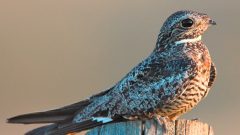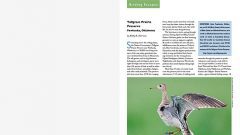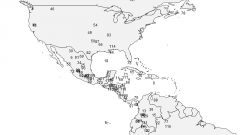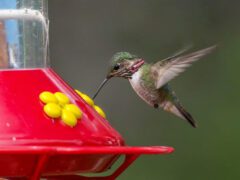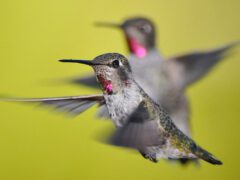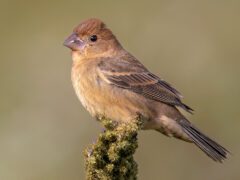Common Nighthawk Similar Species Comparison
Main SpeciesCommon Nighthawk
Adult
Medium-sized, slender bird with long, pointed wings. Note white patch on the wings located closer to the bend in the wing.
© Ronnie d'Entremont / Macaulay LibrarySouth Dakota, June 25, 2017Adult
Extremely short-legged with a tiny bill and small flat head. Well camouflaged in gray, white, buff, and black. Note white patch on lower edge of the wing.
© Jane Mann / Macaulay LibraryFlorida, April 30, 2017Adult
Long-winged and flat-headed with a tiny bill. Plumage color varies across the range with some individuals having more rusty tones while others are grayer. Note white patch on lower edge of the wing.
© Tim Lenz / Macaulay LibraryLouisiana, April 28, 2013Adult
Nests on the ground in open areas such as gravel bars, forest clearings, coastal sand dunes, or sparsely vegetated grasslands.
© Cameron Rutt / Macaulay LibraryLouisiana, May 24, 2017Adult
Hunts on the wing at dawn and dusk, catching an array of flying insects.
© Alex Lamoreaux / Macaulay LibraryFlorida, July 12, 2018Adult male
Adult male—told by distinct white throat patch, wide wing patches, and white tail band (not visible here)—courts females by diving through the air, making a booming sound as air rushes over his wings.
© Andrew Dreelin / Macaulay LibraryMontana, June 14, 2020Adult
Has a huge mouth for catching insects in flight. Opening the mouth is one of several defense mechanisms—including hissing, raising wings, and fluffing feathers—used when facing an intruder.
© Bob Bowhay / Macaulay LibrarySaskatchewan, July 24, 2019Adult
Most active at dusk and dawn. During the day roosts in trees, on the ground, or on a flat roof.
© Matt Hofeditz / Macaulay LibraryColorado, July 28, 2016Adult
Frequently seen roosting on fence posts in western North America.
© Bryan Calk / Macaulay LibraryTexas, July 26, 2017Similar SpeciesLesser Nighthawk
Male
The white bar on the wings of Lesser Nighthawks is closer to the tip of the wing, giving the dark wingtip the shape of an equilateral triangle rather than the longer, isosceles triangle created by the white bar of a Common Nighthawk.
© Brian Sullivan / Macaulay LibraryCalifornia, April 28, 2014Similar SpeciesEastern Whip-poor-will
Adult
Eastern Whip-poor-wills are active at night, whereas Common Nighthawks forage at dusk. In flight, Eastern Whip-poor-wills do not have white in the wings like Common Nighthawks.
© Daniel Murphy / Macaulay LibraryIllinois, May 11, 2016Similar SpeciesChuck-will's-widow
Adult
Chuck-will's-windows are more nocturnal than Common Nighthawks. In flight, Chuck-will's-windows do not have white in the wings like Common Nighthawks.
© Luke Seitz / Macaulay LibraryTexas, April 23, 2012Similar SpeciesAmerican Kestrel
Adult male (Northern)
In silhouette, American Kestrels have a similar shape, but kestrels have a smaller head and lack the nighthawk's notched tail and white bands in the wings. They also fly differently; kestrels have a more direct flight than the erratic, looping flight of nighthawks.
© Jacob Drucker / Macaulay LibraryCalifornia, September 06, 2016Compare with Similar Species
Click on an image to compare
Species in This Family
Nightjars and Allies(Order: Caprimulgiformes, Family: Caprimulgidae)
More to Read
Don't miss a thing! Join our email list
The Cornell Lab will send you updates about birds,
birding, and opportunities to help bird conservation.









